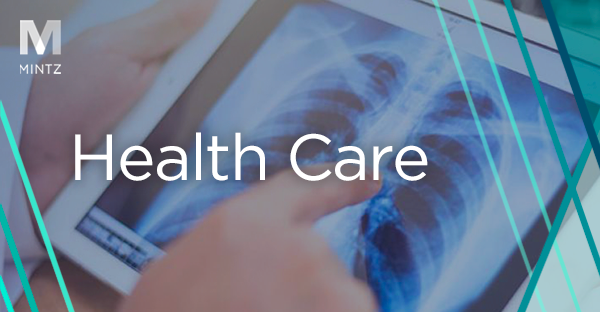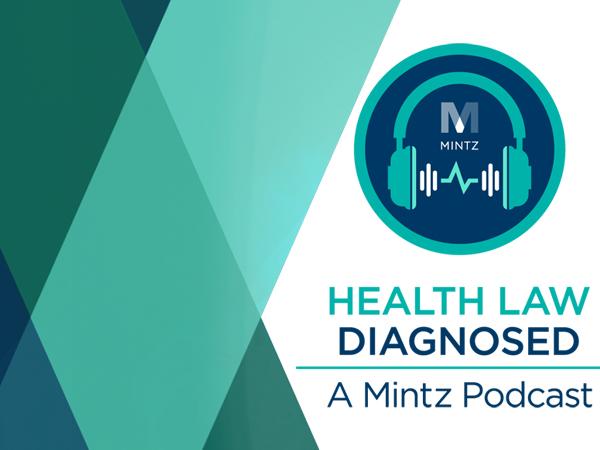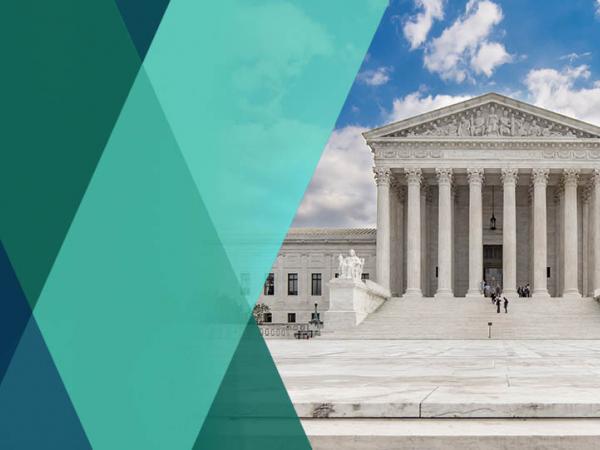
Health Care
Viewpoints
Filter by:
An Update on FDA’s Contribution to COVID-19 Diagnostic Testing
November 5, 2020 | Blog | By Joanne Hawana
Back in the early days of the COVID-19 pandemic, we published a post outlining the different kinds of diagnostic tests that were being marketed and the different roles of the two main federal regulators that oversee the quality of different subsets of tests. Since then, there have been some important policy developments affecting diagnostic and antibody testing. There also has been significant growth in the number of tests authorized by the Food and Drug Administration for point-of-care uses in various patient settings such as clinics, emergency departments, and physician offices. Read on for an update about these developments.
Read more
DOJ Announces the First Open Payments Program / Sunshine Act Enforcement Action
November 3, 2020 | Blog | By Rachel Yount
On October 29, 2020, the Department of Justice (DOJ) announced the first publicly-available settlement involving alleged violations of CMS’s Open Payments Program, otherwise known as the Sunshine Act. The $9.2 million settlement resolved allegations that Minnesota-based medical device manufacturer Medtronic USA Inc. violated (i) the Anti-Kickback Statute (AKS) and the False Claims Act (FCA) by paying kickbacks to a South Dakota neurosurgeon, Wilson Asfora, M.D., and (ii) the Open Payments reporting requirements by failing to accurately report payments it made to Asfora to the Centers for Medicare & Medicaid (CMS). While this settlement is the first public enforcement action involving Open Payments violations, more enforcement actions may be expected in the near future.
Read more
US Health System Warned of Coordinated Ransomware Attacks
October 30, 2020 | Blog | By Dianne Bourque
US hospitals and healthcare facilities struggling to maintain normal operations during the COVID-19 emergency, were warned this week by the federal Cybersecurity and Infrastructure Agency (CISA), the Federal Bureau of Investigation (FBI) and the Department of Health and Human Services (HHS) of a “targeted and imminent cybercrime threat.” Specifically, CISA, FBI and HHS have credible information that malicious cyber actors are targeting hospitals and other health care providers with Trickbot malware, leading to ransomware attacks, data theft and significantly, the disruption of healthcare services during the pandemic.
Read more
Bioethics in a Pandemic: FDA Guidance on Granting EUAs for a COVID-19 Vaccine
October 29, 2020 | Blog | By Bridgette Keller, Benjamin Zegarelli
Earlier this month, the FDA’s Center for Biologics Evaluation and Research issued its highly anticipated guidance outlining the agency’s current thinking on granting emergency use authorization (EUA) to investigational vaccines for COVID-19. This guidance was the subject of intense political debate among the White House, FDA, and other public health officials given the urgent need for a safe and effective vaccine.
Read more
In Case You Missed It: The Influence of Bioethics in Research and Development
October 27, 2020 | Blog
As the COVID-19 pandemic continues to upend our daily lives, the promise of a vaccine offers hope that life may, in the not-too-distant future, return to some version of normalcy. The path to getting a safe, accessible vaccine to market, however, presents a variety of its own challenges. As we’ve been exploring in our Bioethics in a Pandemic blog series, the pandemic has presented a host of bioethics issues pertinent to the vaccine development and distribution process. Mintz's Bridgette Keller recently shared her insights into how bioethics can (and should!) influence research and development at the M2D2 Challenge Awards. A video of her presentation is now available to view online.
Read more
Bioethics in a Pandemic: Final Framework for Equitable Allocation of a COVID-19 Vaccine
October 20, 2020 | Blog | By Bridgette Keller, David Friedman
Earlier this month, the National Academies Committee on Equitable Allocation of Vaccine for the Novel Coronavirus released its Final Framework to guide US distribution and administration of a COVID-19 vaccine, once available. The nuts and bolts of the Final Framework remain largely the same as the Draft Framework we covered previously in our Bioethics Blog Series. After a quick review of the Allocation Phases here, we explore a few areas in the Final Framework the Committee expanded on and responded to stakeholder comments.
Read more
FDA Provides Update on Pre-Cert Program and Launches Digital Health Center of Excellence
October 19, 2020 | Blog
You’d be forgiven in the current climate of coronavirus and election season, to name just a couple hot issues of the day, for missing two recent announcements from the FDA about its digital health program. On September 14, 2020, FDA published “Developing the Software Precertification Program: Summary of Learnings and Ongoing Activities” and the following week, on September 22, launched the Digital Health Center of Excellence.
Read more
CMS Proposes Changes to Medicare’s Coverage Determination Criteria and Expedites Approval of Breakthrough Devices
October 13, 2020 | Blog | By Daryl Berke
CMS recently issued a proposed rule that would grant breakthrough medical devices Medicare coverage immediately upon FDA approval. The rule also proposes to codify a new definition of “reasonable and necessary” for Medicare national coverage determinations that takes into account commercial insurance coverage of items and services. It is unclear how broadly this new "reasonable and necessary" definition will apply if the proposed rule is finalized.
Read more
FDA’s Prescription Drug Advertising Enforcers Issue COVID-19-Related Warning Letter
October 5, 2020 | Blog | By Joanne Hawana
The U.S. Food and Drug Administration (FDA) recently announced what appears to be the first public warning made by the agency to a company promoting an approved prescription drug product for the unapproved use of treating COVID-19 symptoms. Although the regulatory action was announced in the FDA’s daily pandemic update on October 2, 2020, the warning letter issued by the Office of Prescription Drug Promotion (OPDP) is dated September 22, 2020. From our perspective, this public FDA action is notable for two distinct policy reasons.
Read more
Final Canadian Drug Importation Rule and HHS Certification Issued Under Section 804 of the Food, Drug and Cosmetic Act
September 28, 2020 | Blog | By Joanne Hawana
On September 24, 2020, HHS announced that it had finalized the Section 804 Importation Program regulations, which fall under the authority of Section 804 of the Federal Food, Drug and Cosmetic Act (FD&C Act) (21 U.S.C. § 384). Although the Section 804 authority has been in place for nearly twenty years, no previous HHS Secretary had been willing to certify, as required by the law, that drug importation would “pose no additional risk to the public’s health and safety” and would “result in a significant reduction in the cost of covered products to the American consumer.” The preamble to the Final Rule states that HHS Secretary Alex Azar is making the necessary certification to Congress in conjunction with this Final Rule. It also addresses a variety of comments from stakeholders regarding the scope and timing of the Section 804 certification, each of which raise novel questions of law and policy in light of the untested nature of the requirement. Perhaps most interestingly, however, the Final Rule notes several times that HHS/FDA is “unable to estimate the cost savings from this final rule, because we lack information about the likely size and scope of [Section 804 Importation Programs], the specific eligible prescription drugs that may be imported, the degree to which these imported drugs will be less expensive than nonimported drugs available in the United States, and which eligible prescription drugs are produced by U.S.-based drug manufacturers,” making it difficult to reconcile how the HHS Secretary was able to certify that it would result in a significant reduction in costs for U.S. consumers.
Read more
Acting Assistant Attorney General Brian Rabbitt Announces 57 Charged with PPP Fraud in Remarks Delivered at PPP Fraud Enforcement Press Conference
September 25, 2020 | Blog | By Jane Haviland, Brian Dunphy
As predicted, the Department of Justice (DOJ) and other enforcement agencies have acted quickly to bring substantial criminal enforcement actions for fraud against the Paycheck Protection Program (PPP). Acting Assistant Attorney General (AAG) Brian Rabbitt announced recently that the DOJ’s Criminal Division reached the important milestone that day of criminally charging more than 50 individuals for alleged fraud committed to obtain PPP funds.
Read more
CMS Announces Final Rule on ESRD Treatment Choices Model
September 24, 2020 | Blog | By Cassandra Paolillo
Last week, CMS announced the finalized End-Stage Renal Disease (ESRD) Treatment Choices Model (ETC Model), which will test whether incentivizing home dialysis and kidney transplantation will reduce Medicare expenditures while maintaining or improving the quality of care furnished to beneficiaries with ESRD. This post summarizes how participants are selected, the specific payment changes, and the overall timeline.
Read more
Bioethics in a Pandemic: Operation Warp Speed
September 23, 2020 | Blog | By Bridgette Keller
References to Operation Warp Speed (OWS) have been present throughout our coverage of the ethical questions related to the development and distribution of a COVID-19 vaccine. In fact, OWS is part of a broader public-private effort to accelerate COVID-19 countermeasures, such as the development, manufacturing, and distribution of COVID-19 vaccines, therapeutics, and diagnostics. OWS has ambitious goals. It intends to deliver 300 million doses of a safe and effective vaccine for COVID-19 by January 19, 2021. Here, we provide a brief overview of OWS, its current progress, and relevant ethical considerations.
Read more
West Virginia Hospital Enters into a $50 Million Settlement to Resolve Allegations over Excessive Compensation Paid to Referring Physicians
September 16, 2020 | Blog | By Laurence Freedman, Rachel Yount
On September 9, 2020, the Department of Justice (DOJ) announced a $50 million settlement with Wheeling Hospital, Inc. of West Virginia to resolve False Claims Act allegations that Wheeling Hospital violated the Anti-Kickback Statute (AKS) and Stark Law. The settlement resolved False Claims Act allegations that were triggered by a qui tam lawsuit brought by a former vice president of Wheeling Hospital who oversaw hospital operations and physician engagements. According to the relator's complaint, Wheeling Hospital, under its former management, paid several physicians annual compensation in excess of a million dollars based on the volume or value of their referrals.
Read more
Bioethics in a Pandemic: Vaccine Research and Clinical Trials
September 16, 2020 | Blog | By Bridgette Keller, Benjamin Zegarelli
After exploring some of the ethical questions involved in allocating and distributing a potential COVID-19 vaccine and the basic tenets of bioethics, we continue by delving into the ethical issues relating to the vaccine development process, including clinical trials. As a first step, we provide a very brief introduction on how vaccines are developed and tested prior to approval and release.
Read more
Trump Signs Executive Orders Aimed at Tying Domestic Drug Prices to Foreign Prices
September 15, 2020 | Blog | By Theresa Carnegie
President Trump has followed through on his threat to pharmaceutical manufacturers, signing new executive orders on Sunday that take a preliminary step toward the President’s goal of tying domestic drug prices to the prices manufacturers charge in foreign countries. The “Executive Order on Lowering Drug Prices by Putting America First” follows a trio of drug pricing-related executive orders the administration issued this past July. At that time, President Trump also signed a different executive order with the same name, but withheld the order in an attempt to force pharmaceutical manufacturers to the negotiating table. The President warned manufacturers that if they did not propose alternatives to lower drug pricing within 30 days, his administration would take action to implement its previously-abandoned plan to peg U.S. drug prices to foreign prices. Sunday’s order follows weeks of negotiations between the White House and drug manufacturers that have apparently not resulted in any mutually-acceptable proposals for lowering American drug prices.
Read more
363 Sales as a Health Care M&A Tool, Part 2 – Pros and Cons for Buyers and Sellers
September 11, 2020 | Blog | By Deborah Daccord, William Kannel, Tim McKeon
Over the summer, we wrote about why health care companies may want to consider buying assets out of bankruptcy, taking advantage of the Bankruptcy Code Section 363 sale process (a "363 Sale”). We are back with our second post, to provide more detail to the process and discuss some pros and cons of 363 Sales.
As a refresher, a 363 Sale couples a flexible and fast process with ample liability protection for willing buyers. The primary benefit of a 363 Sale is that a buyer can acquire the debtor’s assets free and clear of virtually all liens, claims, and interests burdening the assets and the debtor. And when Section 363 is coupled with the “assumption and assignment” provisions of Section 365 of the Bankruptcy Code, a debtor is able to assign most contracts or leases that a buyer may wish to purchase, including contracts with ironclad anti-assignment language, provided that certain conditions are satisfied. When a target is experiencing severe financial distress, the benefit of acquiring assets “free and clear” is extraordinarily valuable.
Read more
As a refresher, a 363 Sale couples a flexible and fast process with ample liability protection for willing buyers. The primary benefit of a 363 Sale is that a buyer can acquire the debtor’s assets free and clear of virtually all liens, claims, and interests burdening the assets and the debtor. And when Section 363 is coupled with the “assumption and assignment” provisions of Section 365 of the Bankruptcy Code, a debtor is able to assign most contracts or leases that a buyer may wish to purchase, including contracts with ironclad anti-assignment language, provided that certain conditions are satisfied. When a target is experiencing severe financial distress, the benefit of acquiring assets “free and clear” is extraordinarily valuable.
Bioethics in a Pandemic: The Public’s Role in COVID-19 Vaccination
September 9, 2020 | Blog | By Bridgette Keller
As we noted in our previous post, the Johns Hopkins University Center for Health Security (Center) has been hard at work studying and providing thought leadership regarding the COVID-19 pandemic from a variety of angles. The Center, in conjunction with Texas State University and the Working Group on Readying Populations for COVID-19 Vaccine, recently released a report exploring the public’s role in COVID-19 vaccination (Report). The Report provides recommendations to U.S. policymakers, practitioners, and other stakeholders about how to advance public understanding of, access to, and acceptance of vaccines that protect against COVID-19.
Read more
Bioethics in a Pandemic: Draft Framework for Equitable Allocation of COVID-19 Vaccine
September 4, 2020 | Blog | By Bridgette Keller, David Friedman
As you know, the Draft Preliminary Framework for Equitable Allocation of COVID-19 Vaccine (the “Draft Framework”) was released earlier this week, and we are highlighting its major sections as stakeholders prepare to submit comments by Friday, September 4th. Building on the lessons learned from past allocation frameworks, this post highlights the key provisions of the Draft Framework.
Read more
Bioethics in a Pandemic: Uncertainties in Applying the Draft Framework
September 4, 2020 | Blog | By Bridgette Keller, David Friedman
Continuing with our review of the Draft Preliminary Framework for Equitable Allocation of COVID-19 Vaccine (the “Draft Framework”), this post highlights a number of uncertainties that will be faced in implementing the proposed allocation. For additional background on the Draft Framework, please see our earlier posts in the Bioethics in a Pandemic series. The final chapter of the committee’s discussion draft identifies specific uncertainties that could present obstacles to the proposed allocation plan’s implementation. Ultimately, a vaccine allocation framework must remain flexible and adaptive when faced with updated scientific evidence and developments like those listed above. These considerations, as well as the public comments, will continue to be inform the development of the framework.
Read more
Explore Other Viewpoints:
- Data Centers & Digital Infrastructure
- AI: The Washington Report
- Antitrust and Federal Regulation
- Appellate
- Arbitration, Mediation & Alternate Dispute Resolution
- Artificial Intelligence
- Awards
- Bankruptcy & Restructuring
- California Land Use
- Cannabis
- Class Action
- Complex Commercial Litigation
- Construction
- Consumer Product Safety
- Corporate Governance (ESG)
- Cross-Border Asset Recovery
- DEI Legal Developments
- Debt Financing
- Direct Investing (M&A)
- Diversity
- EB-5 Financing
- Education & Nonprofits
- Employment
- EnforceMintz
- Environmental (ESG)
- Environmental Enforcement Defense
- Environmental Law
- Environmental, Social, and Corporate Governance (ESG)
- FDA Regulatory
- False Claims Act
- Federal Circuit Appeals
- Financial Institution Litigation
- Government Law
- Growth Equity
- Health Care
- Health Care Compliance, Fraud and Abuse, & Regulatory Counseling
- Health Care Enforcement & Investigations
- Health Care Transactions
- Health Information Privacy & Security
- IP Due Diligence
- IPRs & Other Post Grant Proceedings
- Immigration
- Impacts of a New US Administration
- Insolvency & Creditor Rights Litigation
- Institutional Investor Class Action Recovery
- Insurance & Financial Services
- Insurance Consulting & Risk Management
- Insurance and Reinsurance Problem-Solving & Dispute Resolution
- Intellectual Property
- Investment Funds
- Israel
- Licensing & Technology Transactions
- Life Sciences
- Litigation & Investigations
- M&A Litigation
- ML Strategies
- Managed Care
- Medicare, Medicaid and Commercial Coverage & Reimbursement
- Mergers & Acquisitions
- Patent Litigation
- Patent Prosecution & Strategic Counseling
- Pharmacy Benefits and PBM Contracting
- Portfolio Companies
- Privacy & Cybersecurity
- Private Client
- Private Equity
- Pro Bono
- Probate & Fiduciary Litigation
- Products Liability & Complex Tort
- Projects & Infrastructure
- Public Finance
- Real Estate Litigation
- Real Estate Transactions
- Real Estate, Construction & Infrastructure
- Retail & Consumer Products
- Securities & Capital Markets
- Securities Litigation
- Social (ESG)
- Special Purpose Acquisition Company (SPACs)
- Sports & Entertainment
- State Attorneys General
- Strategic IP Monetization & Licensing
- Sustainable Energy & Infrastructure
- Tax
- Technology
- Technology, Communications & Media
- Technology, Communications & Media Litigation
- Trade Secrets
- Trademark & Copyright
- Trademark Litigation
- Unified Patent Court (UPC)
- Value-Based Care
- Venture Capital & Emerging Companies
- White Collar Defense & Government Investigations
- Women's Health and Technology








